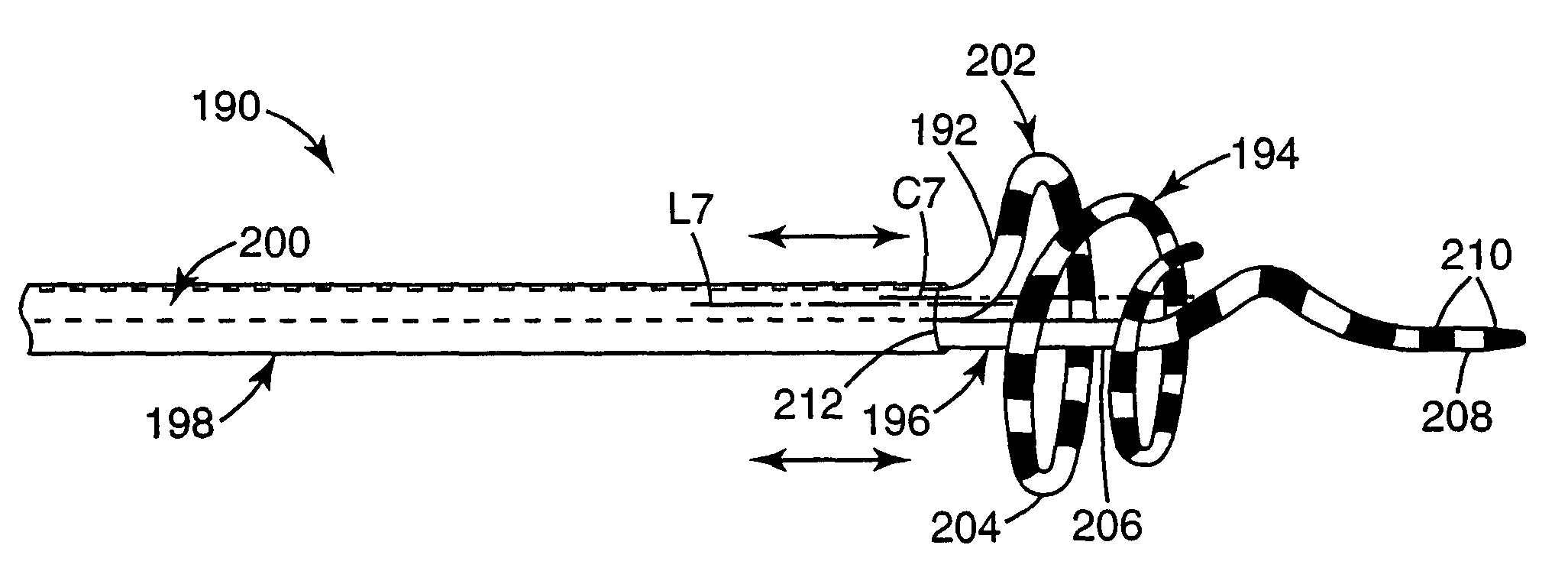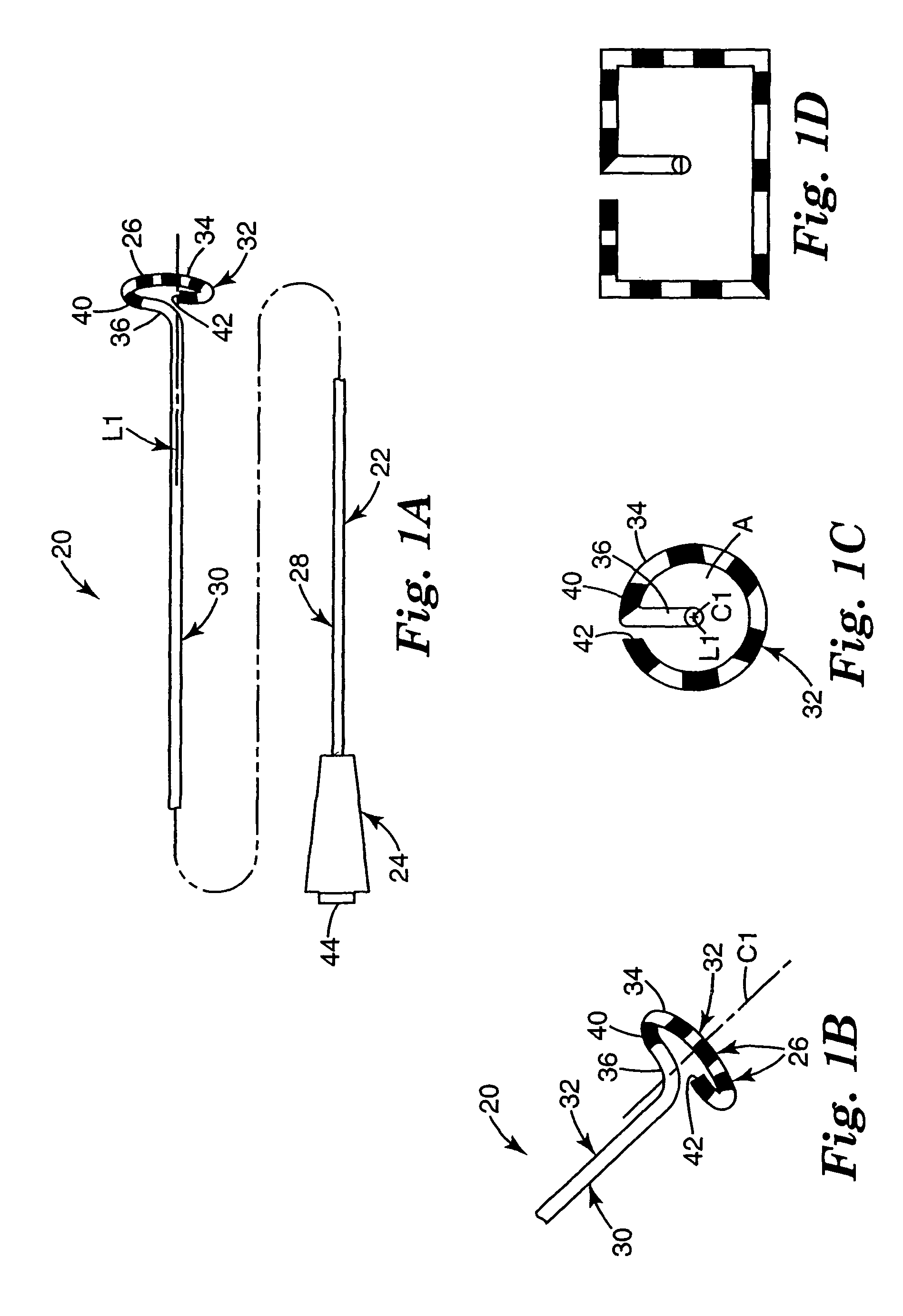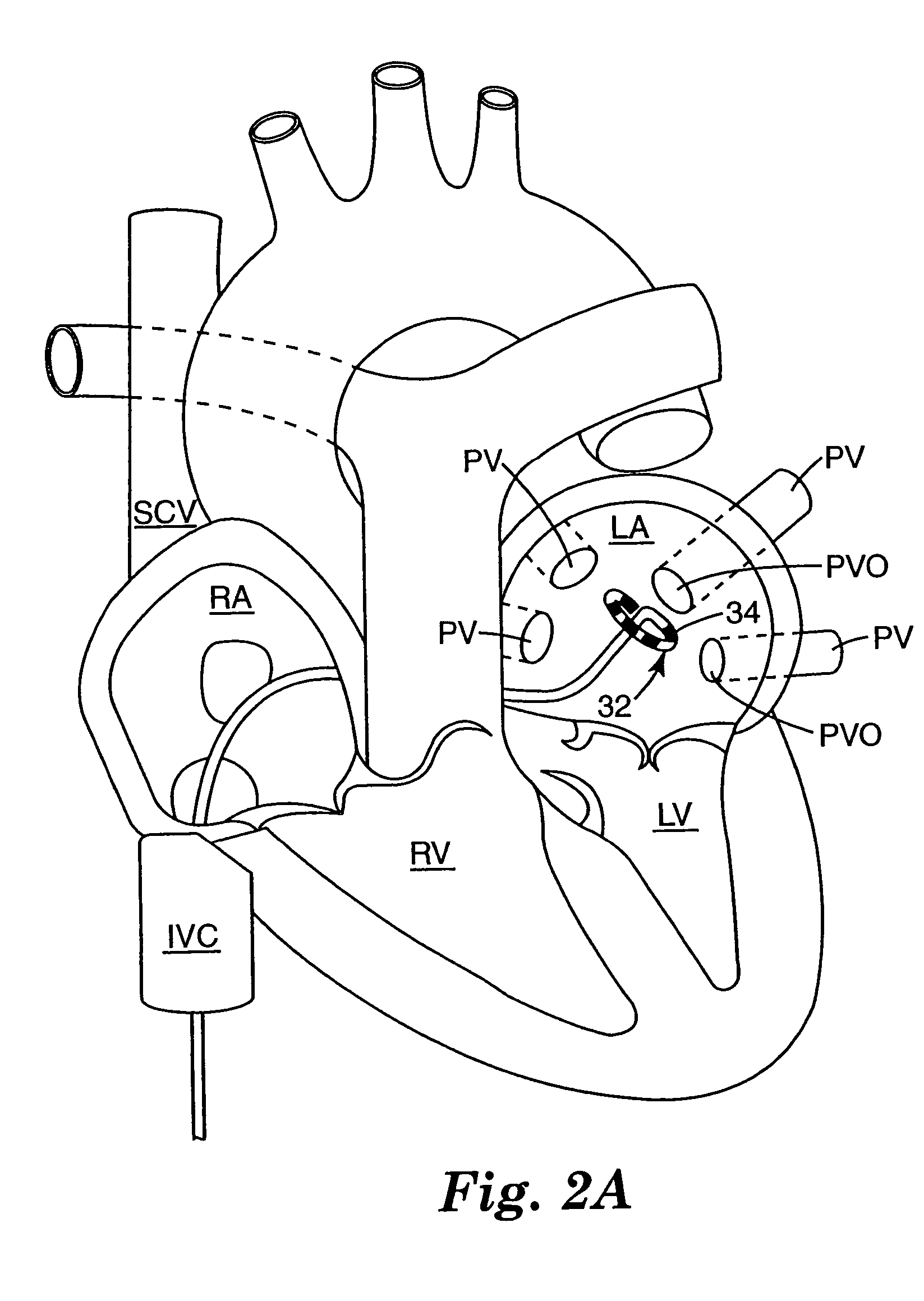Ablation catheter assembly with radially decreasing helix and method of use
- Summary
- Abstract
- Description
- Claims
- Application Information
AI Technical Summary
Benefits of technology
Problems solved by technology
Method used
Image
Examples
Embodiment Construction
[0072]One preferred embodiment of a catheter assembly 20 in accordance with the present invention is shown in FIGS. 1A-1C. The catheter assembly 20 is comprised of a catheter body 22, a handle 24 and electrodes 26. As described in greater detail below, the catheter body 22 extends from the handle 24, and the electrodes 26 are disposed along a portion of the catheter body 22.
[0073]The catheter body 22 is defined by a proximal portion 28, an intermediate portion 30 and a distal portion 32, and includes a central lumen (not shown). Although not specifically shown, the catheter body may be configured for over-the-wire or rapid exchange applications. In one preferred embodiment, the proximal portion 28, the intermediate 30 and the distal portion 32 are integrally formed from a biocompatible material having requisite strength and flexibility for deployment within a heart. Appropriate materials are well known in the art and include polyamide.
[0074]The intermediate portion 30 extends from t...
PUM
 Login to View More
Login to View More Abstract
Description
Claims
Application Information
 Login to View More
Login to View More - R&D
- Intellectual Property
- Life Sciences
- Materials
- Tech Scout
- Unparalleled Data Quality
- Higher Quality Content
- 60% Fewer Hallucinations
Browse by: Latest US Patents, China's latest patents, Technical Efficacy Thesaurus, Application Domain, Technology Topic, Popular Technical Reports.
© 2025 PatSnap. All rights reserved.Legal|Privacy policy|Modern Slavery Act Transparency Statement|Sitemap|About US| Contact US: help@patsnap.com



